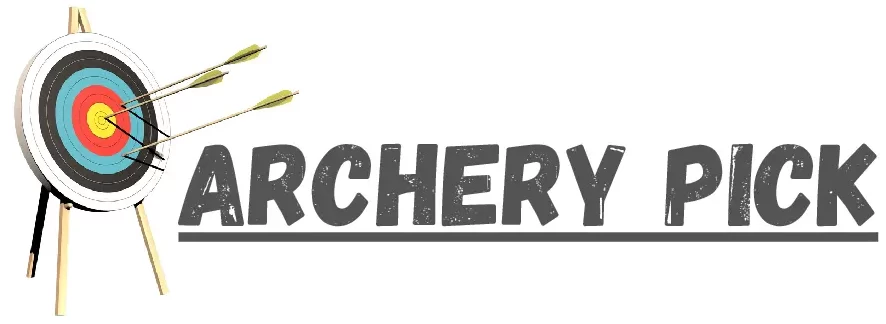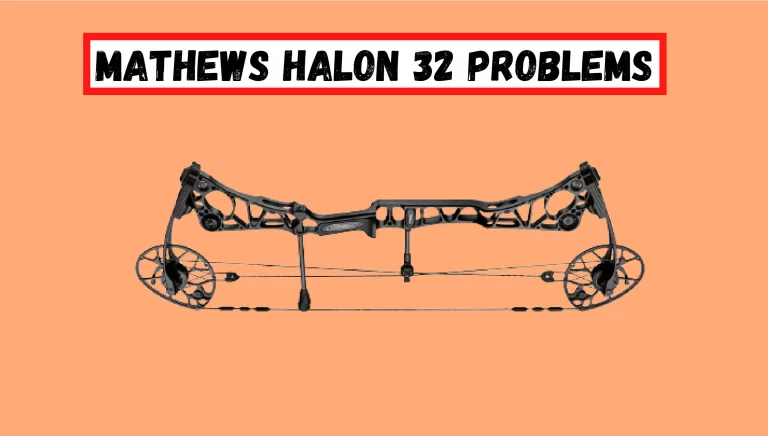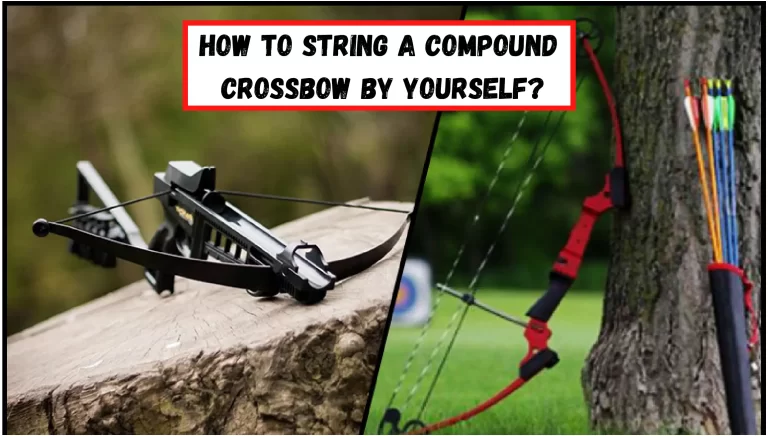How To String A Compound Bow? – [Simple & Easy Steps]
"As an Amazon Associate, I earn from qualifying purchases. This post contains affiliate links"
If you are into archery then you will understand how fascinating it feels when your compound bow arrives. But wait a minute! it needs to be strung first. Now you might be wondering how to string a compound bow?
In this article, we will learn how to string a compound bow, what are the things you need to keep in mind during this whole process and what things should be avoided when stringing a compound bow.
With that said, we know you must be very excited to read the whole article therefore, we won’t keep you waiting for long. So without any further ado, let’s get started!
Why Do You Need to String a Compound Bow?
The first thing that might come to your mind is why do you need to string a compound bow in the first place. After all, it comes with a string, right?
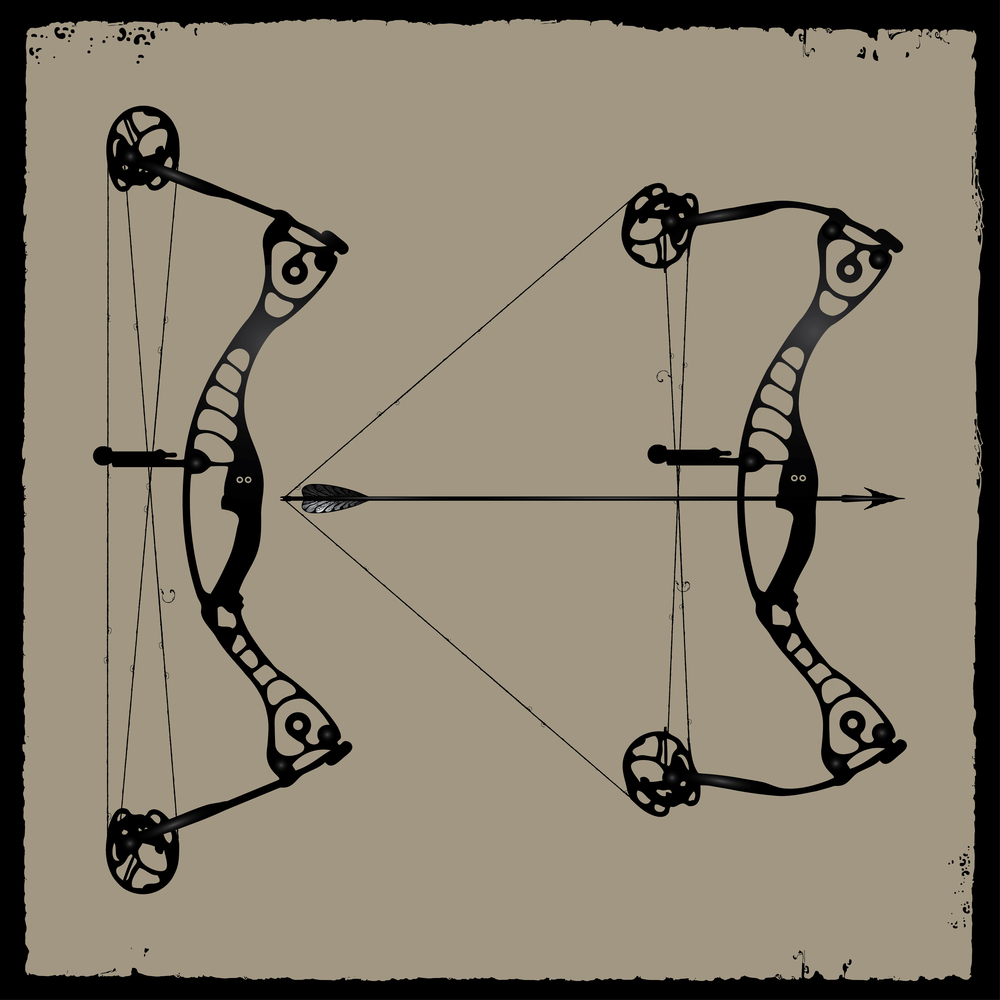
Well, the fact of the matter is that every time you shoot an arrow, the energy from the bowstring is transferred to the arrow which makes it fly. This process gradually weakens the bowstring and after some time it needs to be replaced.
Another reason for stringing a compound bow is that as you keep on practicing with your bow, your draw weight increases. This means that you will need a stronger and thicker bowstring so that it can bear the additional weight.
Note:- How do I Build an Archery Target For a Compound Bow? It’s Perfect and Working.
Moreover, if you are into competitive archery then you will need to restring your bow more often as compared to a recreational archer. This is because in competition, you have to shoot more arrows in a shorter time frame which takes a toll on the bowstring.
Is Stringing a Compound Bow Different Than a Regular Bow?
The process of stringing a compound bow is not very different than stringing a regular bow. However, there are a few additional steps involved which we will discuss later on in the article.
Another difference between the two is that a compound bow has a pulley system attached to it whereas a regular bow doesn’t have one. This means that you need to take extra care of the cables and wheels when restringing your compound bow.
Besides these two differences, the process of stringing both bows is more or less the same. Therefore, if you know how to string a regular bow then you won’t have any problem doing it with a compound bow.
Can You String a Compound Bow at Home?
Doing a lot of things at home should be your top priority because it makes you self sufficient. All these things include stringing a compound bow at home too.
Yes, you can easily string a compound bow at home with a little bit of practice and proper guidance. It might seem like a daunting task at first but once you get the hang of it, trust us, it’s not that difficult.
The most important thing that you need to keep in mind is safety. Stringing a bow is not a very dangerous task but still, there is always a risk of injury involved. Therefore, it is better to be safe than sorry.
Another thing that you need to consider is whether you have all the tools required for the job or not. Once you have all the necessary tools with you, half of your work is already done.
What Are the Different Types of Bowstrings?
Based on their design, and nature bowstrings can be divided into several types. It is best to understand them all first because it will help you choose the right one for your needs even if you are a complete beginner.
1. Twisted String
The most common type of bowstring is the twisted string. As the name suggests, this string is made by twisting together two or three strands of lower quality materials. The number of twists per inch can range from 3-5.
This type of string is cheap and easily available but it has a shorter lifespan as compared to the other types of strings. Moreover, it also stretches more which can result in inaccurate shots.
2. Served String
Another type of string is the served string. This string is made by wrapping a thread or a cord around the central portion of the string. The serving protects this central portion from wear and tear and also increases the lifespan of the string.
The material used for making the serving can be either natural fibers like linen or man-made materials like Kevlar. Served strings are more expensive than twisted strings but they are worth the price as they are more durable and accurate.
3. Fast Flight String
The third type of string is the Fast Flight string. This string is made of high-quality materials like Kevlar or Dyneema and has very low stretch. This makes it ideal for competition as it provides more accuracy.
However, Fast Flight strings are not recommended for beginners as they are more difficult to replace and if not installed properly, can damage the bow.
Things You Will Need to String a Compound Bow!
Now that you’ve learned everything necessary prior to the process let’s move on to the next step i.e. the things that you will need when stringing a compound bow.
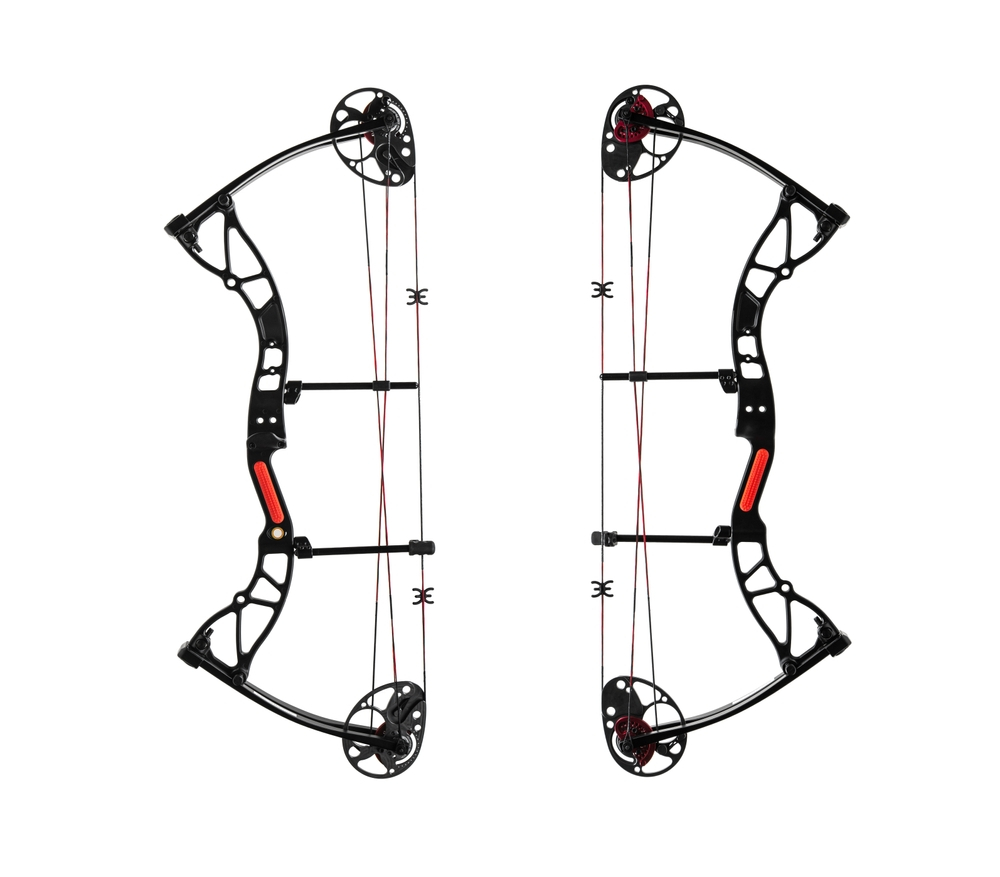
1. Bow Stringer
The most important tool that you need is a bow stringer. This is a tool that helps you in attaching the string to the bow without causing any damage.
It consists of two loops, one of which goes over the top limb while the other goes over the bottom limb. There is also a central portion where you attach the string.
2. Bow Square
Another thing that you will need is a bow square. This is a small tool that helps you in ensuring that the nock point is at 90 degrees to the string. This is important because if it’s not then your shots will be inaccurate.
3. Pliers
The last thing that you need is a pair of pliers. You might need them to adjust the tension on the cables or to remove the string in case it gets damaged.
Now that you know everything you need, let’s move on to the final step i.e. the actual process of stringing a compound bow.
The Process of Stringing a Compound Bow
Once you have everything in your hands, the next thing that you need to do is to follow the instructions given below.
Step 1: Start by attaching one end of the string to the top limb of the bow. For this, you will need to use the bow stringer.
Step 2: The next step is to attach the other end of the string to the bottom limb. Again, you will need to use the bow stringer for this.
Step 3: Once both ends are attached, it’s time to adjust the nock point. For this, you will need to use the bow square. Place it on the string and adjust it until the nock point is at 90 degrees to the string.
Step 4: The last step is to adjust the tension on the cables. You can do this by using pliers. Make sure that the tension is not too high or too low. It should be just right.
And that’s it! You have now successfully strung a compound bow. Just make sure to practice regularly so that you can master the art of shooting accurately.
What Things You Need To Keep In Mind During The Process?
When you are stringing a compound bow, there are certain things that you need to keep in mind. Keeping these things in mind will help minimize the risk of accidents and damage and will help you achieve your goal perfectly.
These are as follows:
- Make sure that the string is of the right length. If it’s too long or too short then it will affect your shots.
- Make sure that the nock point is at 90 degrees to the string. If it’s not then your shots will be inaccurate.
- Adjust the tension on the cables carefully. If it’s too high or too low then it will damage the bow.
- Always make sure to use a bow stringer. This will help you in attaching the string to the bow without causing any damage.
- Avoid using too much pressure during the process. This might damage the bow.
- Always practice safety while handling the bow and the string.
Final Words
So in this article, we took you through a complete tutorial and you learned how to string a compound bow. Besides that, we also discussed different types of bowstrings available along with their pros and cons.
In addition to this, you learned how to choose the right bowstring for your needs and what things you will need to complete this whole process. We hope after making it this far, you will not only have enjoyed reading our guide but also found it quite interesting.
If there are still any confusion related to stringing a compound bow or if there is something we missed, then please let us know in the comment section below and we will get back to you as soon as possible.
We would also love to hear from you if you have any suggestions or feedback related to this article. We always appreciate hearing from our readers.
Until Next Time, Happy Hunting!
Related Posts:-
